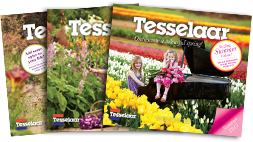
Daffodil Chinese Sacred Lily
An heirloom sensation.
This product is currently out of stock and unavailable.




The well formed flowers have a tidy white perianth and a deep yellow cup. An impressive five to ten flowers open on each stem. The blooms have a fantastic, subtle orangey honey fragrance.
It is robust, a good naturaliser and a great cut flower. It also makes a good choice for forcing. This Mediterranean native even grows well in warmer climes.
Narcissus 'Chinese Sacred Lily' has been in cultivation for over a thousand years in Egypt and Israel. In China it blooms over the Chinese New Year period (but for us Jul/Aug) and its cup is a symbol of prosperity and good luck. It is endemic to the Middle East and travelled to China in 863AD. It came with the Chinese to America in the 1800's with the Californian Gold Rush, where it naturalised in the area and still blooms to this day.
They come into leaf earlier than most daffodils so in heavy, late frost areas they may be damaged. Tolerant of part shade in warm climates.
Botanically this wild daff is Narcissus tazetta subsp. lacticolor, the lacticolor means milk white. Other common name are; bunch flowering Narcissus, Chinese Grand Emperor, Joss Lily, Water Nymph Flower, Water Fairy Flower and Good Luck Lily.
It is hard to envisage a spring without Daffodils and these are some of the best. We think Wordsworth said it well when he wrote “my heart with pleasure fills, and dances with the daffodils”.
Plant them once and enjoy them for years, daffodils are easy, they like the simple things in life; plenty of sun and a well drained soil. It is this sunny disposition that is appealing to gardeners worldwide. We choose the best varieties for our Australian conditions so you are guaranteed success.
You can take advantage of the large variety available to create a symphony of colours and textures in your garden or containers. Choose early mid and late flowering varieties to extend your show.
Plant Daffodil bulbs three times as deep as the bulb is high, with the pointy end up. The depth will protect them from heat and soil erosion, as well as providing strength for the stem. Space your Daffodils 10-20cm apart, more if you are leaving the bulbs in to naturalise, closer for a more dramatic display. We like to plant ours three to a hole to create instant effects.
Once the flowering has finished you can remove the flower stem (this stops the plant focusing on seed production and will increase your bulb). Allow the foliage to remain until it has yellowed. This is the time when the Daffodil foliage is gathering energy and nutrients for next year’s blooms. Keep the plants relatively moist during this time, and add a little general purpose fertiliser. Daffodils like Potash and slow release fertiliser brands which are low in nitrogen (this means more flowers and less foliage), and you won’t need much as they are not heavy feeders.
Chinese Sacred Lily is a Division 13 species daffodil.
Supplied as: Bulbs
Size: na
| Code | DAJSL |
|---|---|
| Botantical name | Narcissus tazetta subsp. lacticolor |
| Height | 30-45cm |
| Width | 10-15cm |
| Flowers | Mid to Late season |
| Climate | Cool to Mediterranean |
| Availability | Australia wide |
| Frost hardiness | Fully Hardy |
| Aspect | Full Sun to Semi Shade |
| Supplied as | Bulbs |
| Size | na |
| Water needs | 1 |

